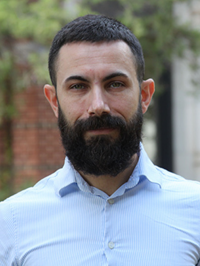
Associate Professor
Email: mgalizia@ou.edu
Phone: (405) 325-5807
Office: Sarkeys Energy Center, T-315
Website
Education
Ph.D. Chemical Engineering (2010)
University of Bologna (Italy)
M.S. Chemical Engineering (2006)
University of Bologna (Italy)
Research Focus
Experience and Awards
About
Our research program aims to developing new polymer-based materials for large scale gas, vapor and liquid separation membranes. Fundamental sorption and transport properties of pure and mixed gases, vapors and liquids in polymers and polymer-based materials are studied using a combined experimental and theoretical approach, and correlated with the polymer structure. Our final goal is developing methods for rational design of membrane materials for energy-efficient separations, such as gas/vapor separation, pervaporation, vapor permeation and organic solvent nanofiltration (OSN). This research area is intrinsically multidisciplinary and embraces the broad areas of Chemical, Materials and Energy Engineering, as well as Polymers Chemistry.
Membrane separations are becoming competitive with traditional separation processes, such as distillation or absorption. However, a limiting factor for the use of membrane technologies on large scale is the availability of materials endowed with i) adequate separation performance, and ii) good chemical, thermal and mechanical stability.
In chemical, petrochemical and refinery industry, distillation is today the standard process for large scale separation of organic mixtures. The over 40,000 distillation columns installed in the US use about 50% of the energy consumed by the chemical industry, and 6% of the total energy consumed in the country. Replacing distillation with membrane-based separations would bring significant benefits, above all energy saving and greater environmental sustainability. Remarkably, high separation efficiency and energy sustainability can be achieved when membrane separation is combined with other processes, giving rise to the so-called process intensification.
Ideal membrane materials should exhibit: i) good separation performance and productivity, ii) good resistance to chemically challenging environments, iii) high dimensional stability, and iv) good stability at temperatures up to 150°C.
Please, check our Research Group Website out for more information.